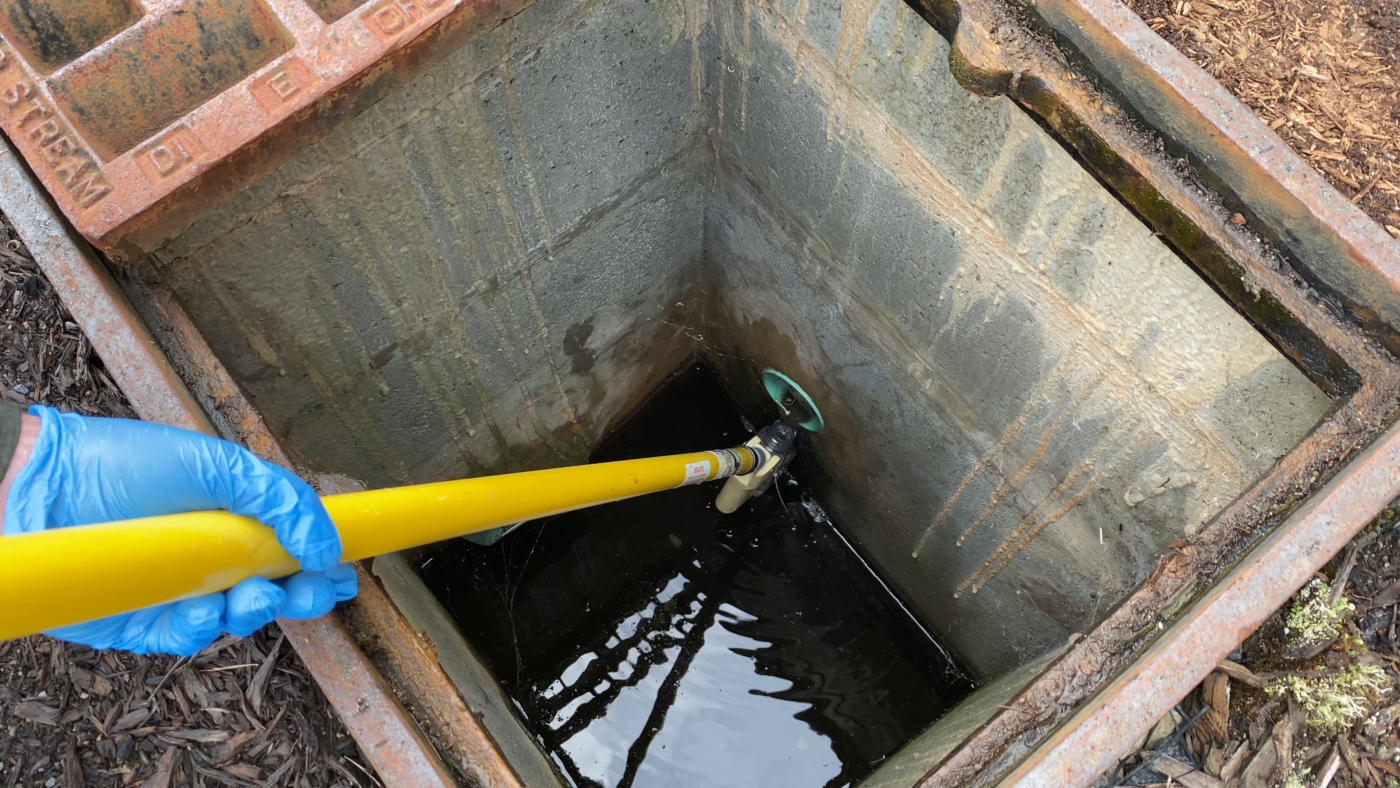Sampling stormwater out of a catch basin is a common scenario that many facilities face when sampling for their ISGP. With multiple stormwater inputs, hard-to-reach sampling points, and heavy coverings, catch basins can be an extremely intimidating scenario to tackle. This article will help arm you with the proper tools and techniques to make catch basin sampling a breeze.
1. Accessing your Catch Basin Safely
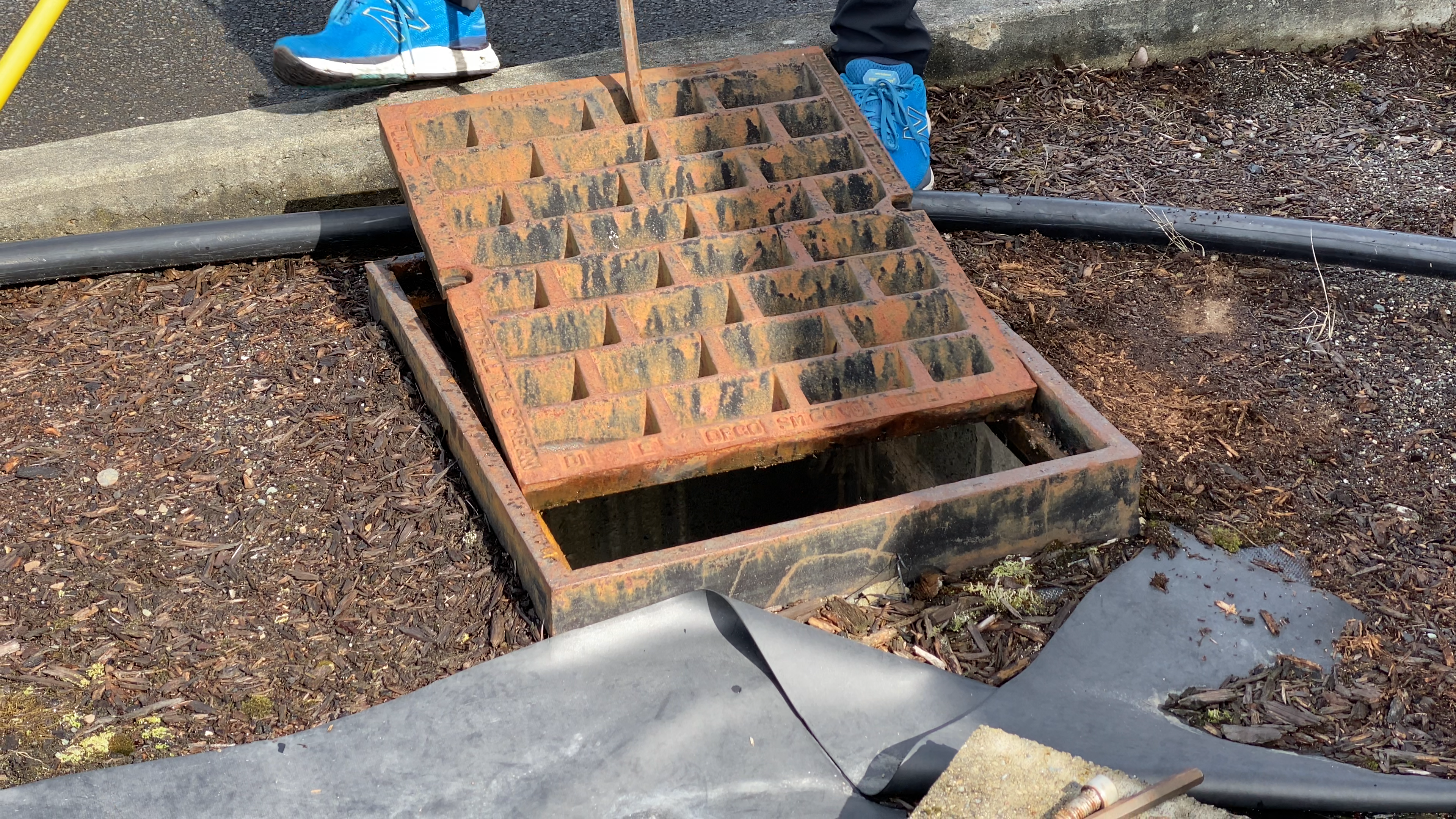
The catch basin grate or lid can be very heavy. A simple grate hook is an excellent tool for sliding off smaller coverings. If you have back problems, need to remove a larger covering, or want to prevent injury potential, you may consider investing in a specialized grate lifter. Several models are available, but most are some form of large lever that allows you to safely and securely remove your grate or lid. Remember when removing rectangular lids they can be easily dropped into the catch basin, so make sure your removal method is secure, and never attempt to climb into a catch basin to retrieve a lost lid without proper training.
The open hole in the ground that is left when opening a catchbasin can present a significant safety hazard on your site. Never leave an open catch basin unattended. Since catch basins are often located near heavily trafficked areas, it may be a good idea to close off the area and temporarily route traffic around the area you are sampling.
Confined space training is required for anyone attempting to enter a catchbasin. Do not attempt to enter a catch basin without proper training. Luckily there are sampling poles and other tools available to allow you to safely and effectively sample your basin without the need to climb in.
2. Identify your Sample Point
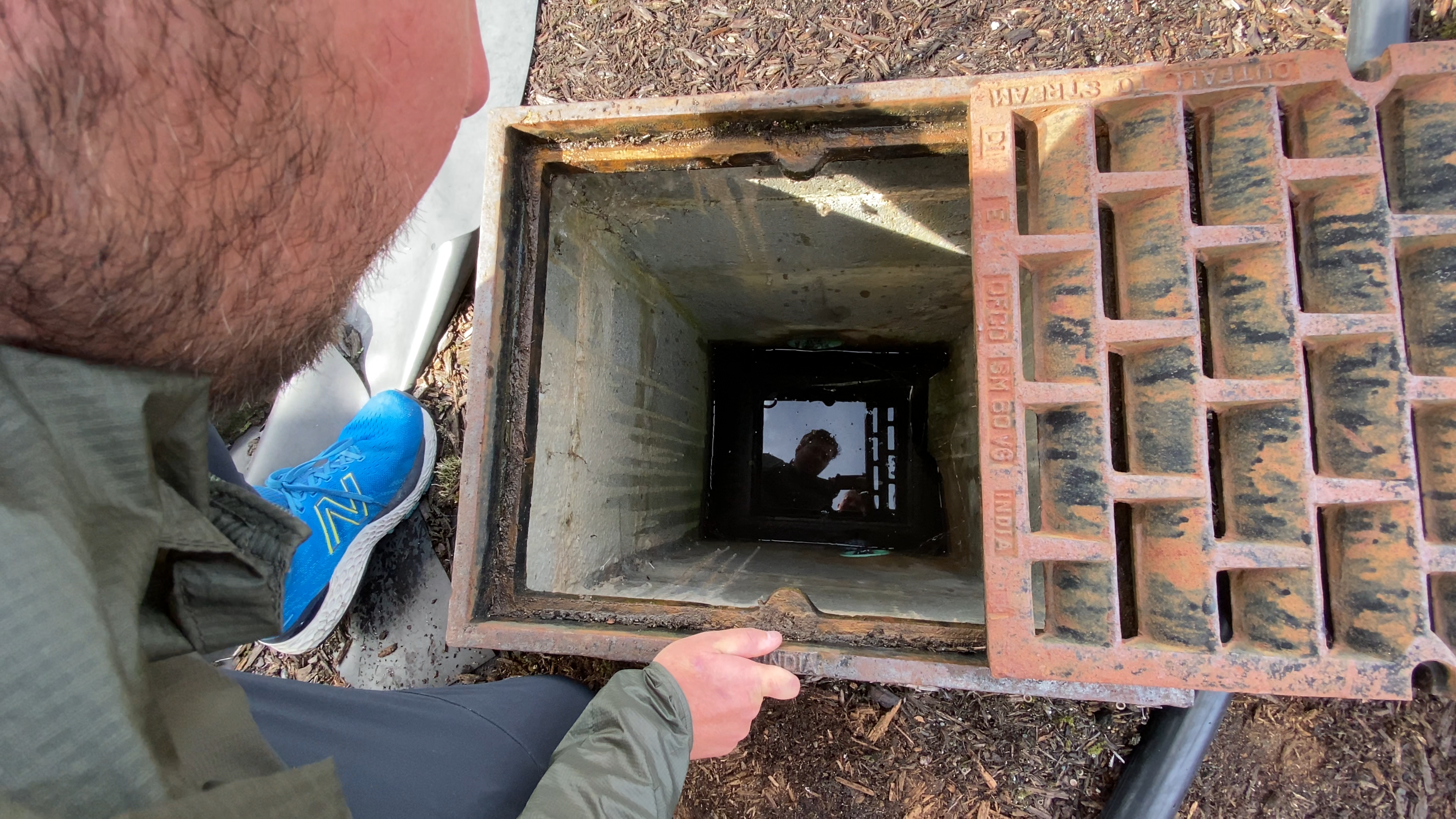
A catch basin can have multiple stormwater inputs that act as potential sampling points. One catch basin may have 3 pipes coming in, the bottom sump, and water flowing in over the top. That is 5 potential points to sample in a relatively small area. It is important to identify which of these sampling points is representative of the area of your facility you need to sample. Suppose we want to sample the area immediately around our loading dock, for example. In that case, we might need to dig up the as-builts to identify that the central pipe comes in from our loading dock, the pipe on the left comes in from a neighboring facility’s parking lot, and the pipe on the right comes in from the roof.
When you identify which of these pipes is the correct one, take a picture and keep it with all of your sampling supplies. Sometimes it can be months between sampling events, and it is easy to forget.
Avoid sampling from the catchbasin sump. The sump of a catchbasin is where the sediment and a certain volume of water are pooled. It is advised to not take your stormwater sample out of this area if possible for 2 reasons:
- The sump could contain water that isn’t from your facility. As mentioned in the example above, you could have water coming into a catchbasin that is from a neighbor’s facility. You have no control over what types of pollutants could be coming off of their facility, and you don’t want to take the hit for someone else’s pollution.
- The sump tends to accumulate pollutants. Since the sump acts as a settling area for sediment across multiple rain events, the water in the sump likely contains a higher level of pollutants that are associated with the settling of sediment and other bound contaminants such as metals. Do make note of the sediment levels in your sump, however, as these should be removed once they reach 60% of the sump volume.
3. Use Proper Tools and Handling Techniques
As with any sampling scenario, catch basin sampling requires proper sample handling techniques. Using gloves and changing them frequently is a great way to avoid accidental contamination of a sample. We mention several simple sample handling techniques that will help with quality assurance in our Sample Handling post. What makes a catch basin unique is the need to sample below ground level in an area that is hard to reach.
Sampling poles make this much easier. A sampling pole will allow you to securely attach a sample bottle, and get it into the stream of flowing water while standing a safe distance away from the open basin. When using a sample pole, you must avoid potential contamination risks. Have firm control of the pole, and don’t let the open bottle touch the sides of the catchbasin. Our Sampling Kit post described the importance of having extra bottles on hand. This is even more important when sampling with a sample pole, as you have less control of the bottle an can easily drop or otherwise contaminate it. Don’t miss a sample, or turn in a potentially contaminated sample because you didn’t have a spare bottle on hand.
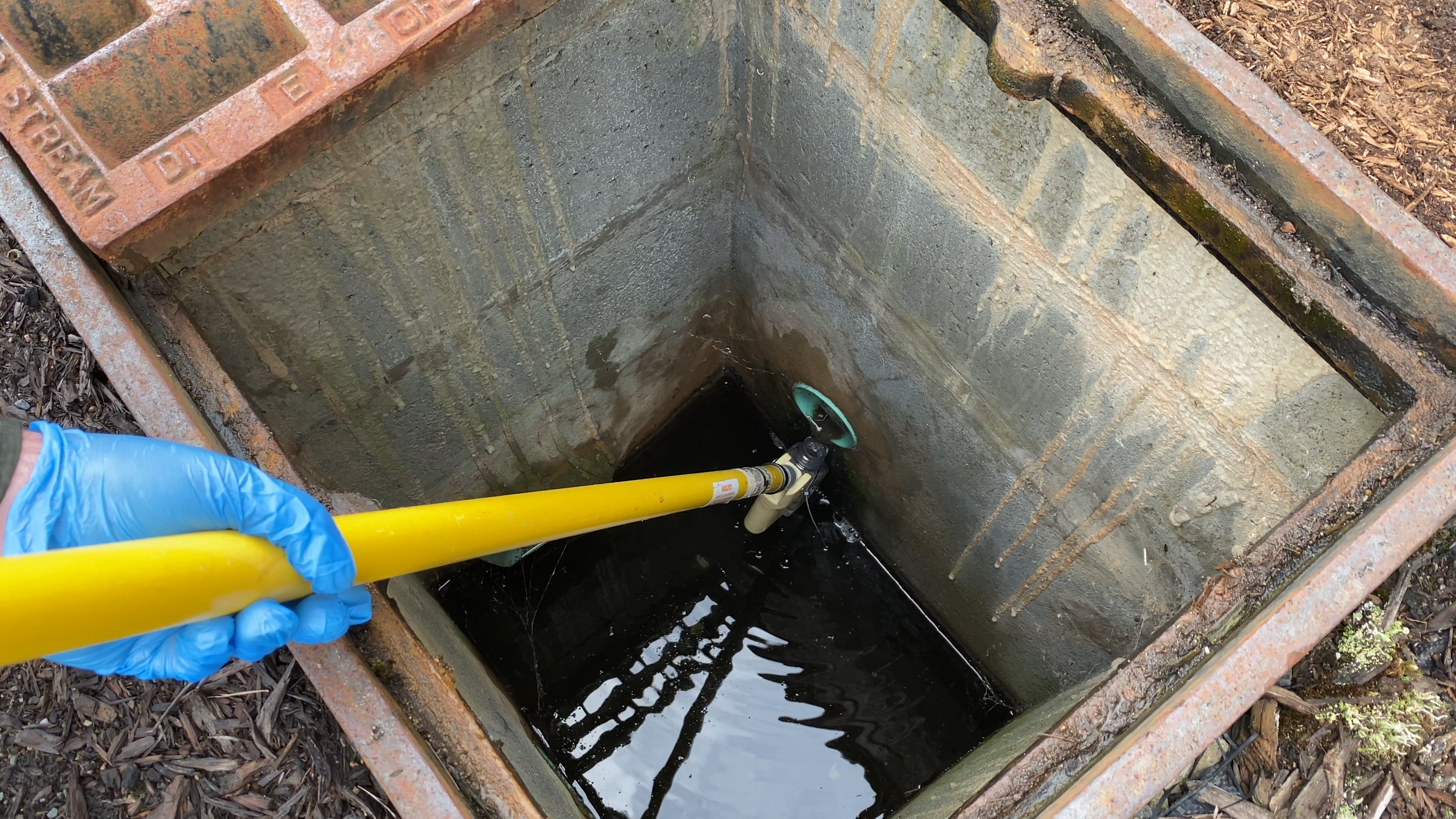
Cleaning around the lip of your catch basin is an important step if you are sampling stormwater that is flowing in from the top. Sediment, moss, and stormwater contaminants can accumulate in this area, and can make the difference between a clean sample and a benchmark exceedance.
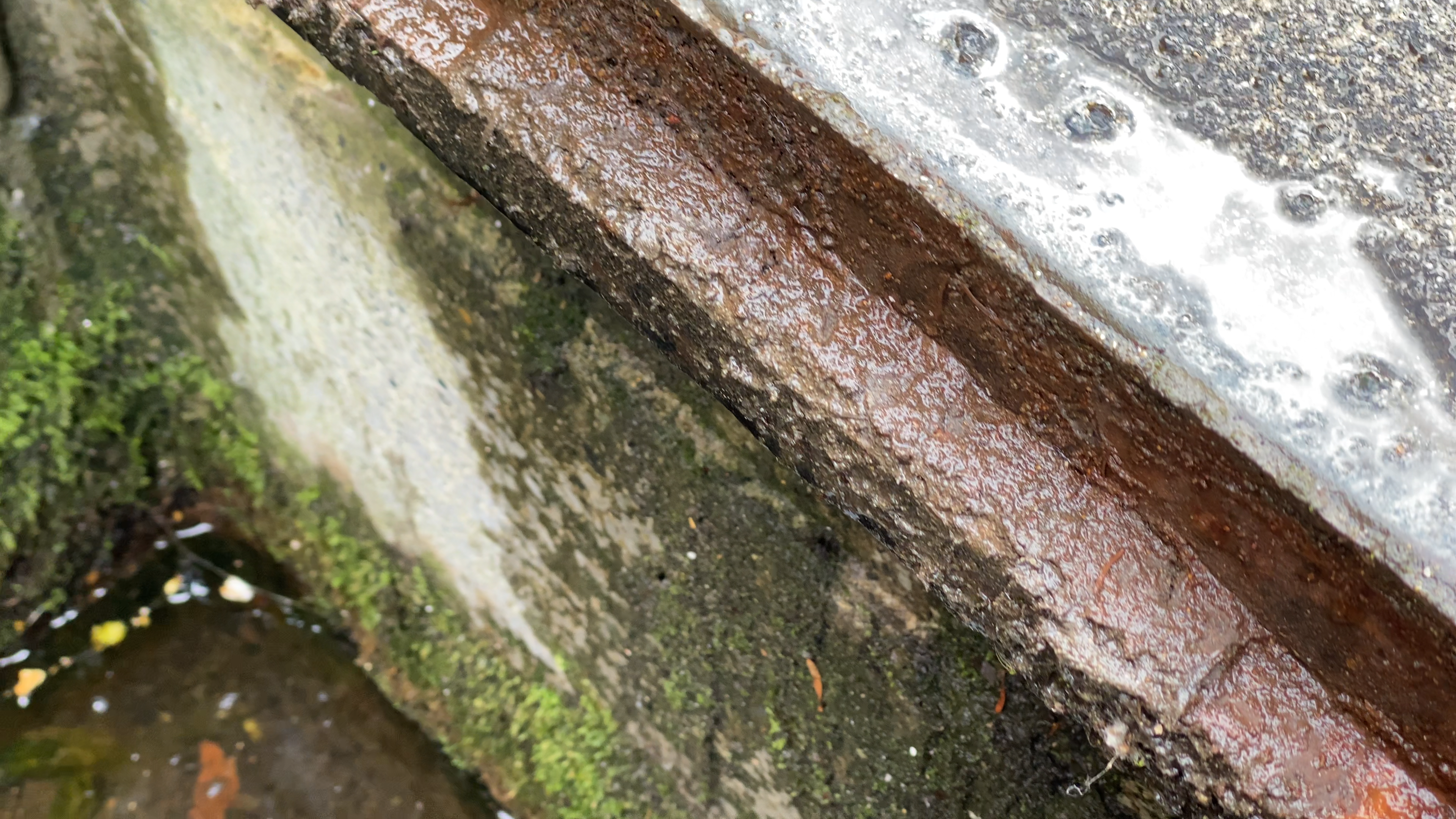
Preservatives can also be a little tricky to deal with when sampling a catchbasin. If your bottles are pre-loaded with preservatives, you want to avoid inverting your bottle and losing that preservative. A sample pole may be a little unwieldy the first couple of times you use it, so it might be a good idea to sample your non-preservative bottles first to get the hang of it. You may also discuss with your lab the possibility of adding a preservative after you sample. This should be a last resort, as this option can get confusing quickly.
Sampling from a catchbasin can be an intimidating proposition at first, however, it isn’t much different from any other sampling scenario once you know the proper techniques. Safety is the most important consideration to make. Protect your back by using the proper tools to open up the catch basin, and protect others by directing traffic away from this open pit. Sampling from the correct point in your catchbasin prevents benchmark exceedances caused by your neighbors, and using proper sample handling techniques prevents exceedances caused by you.
For more video content covering a wide range of stormwater topics, please visit our YouTube page!

